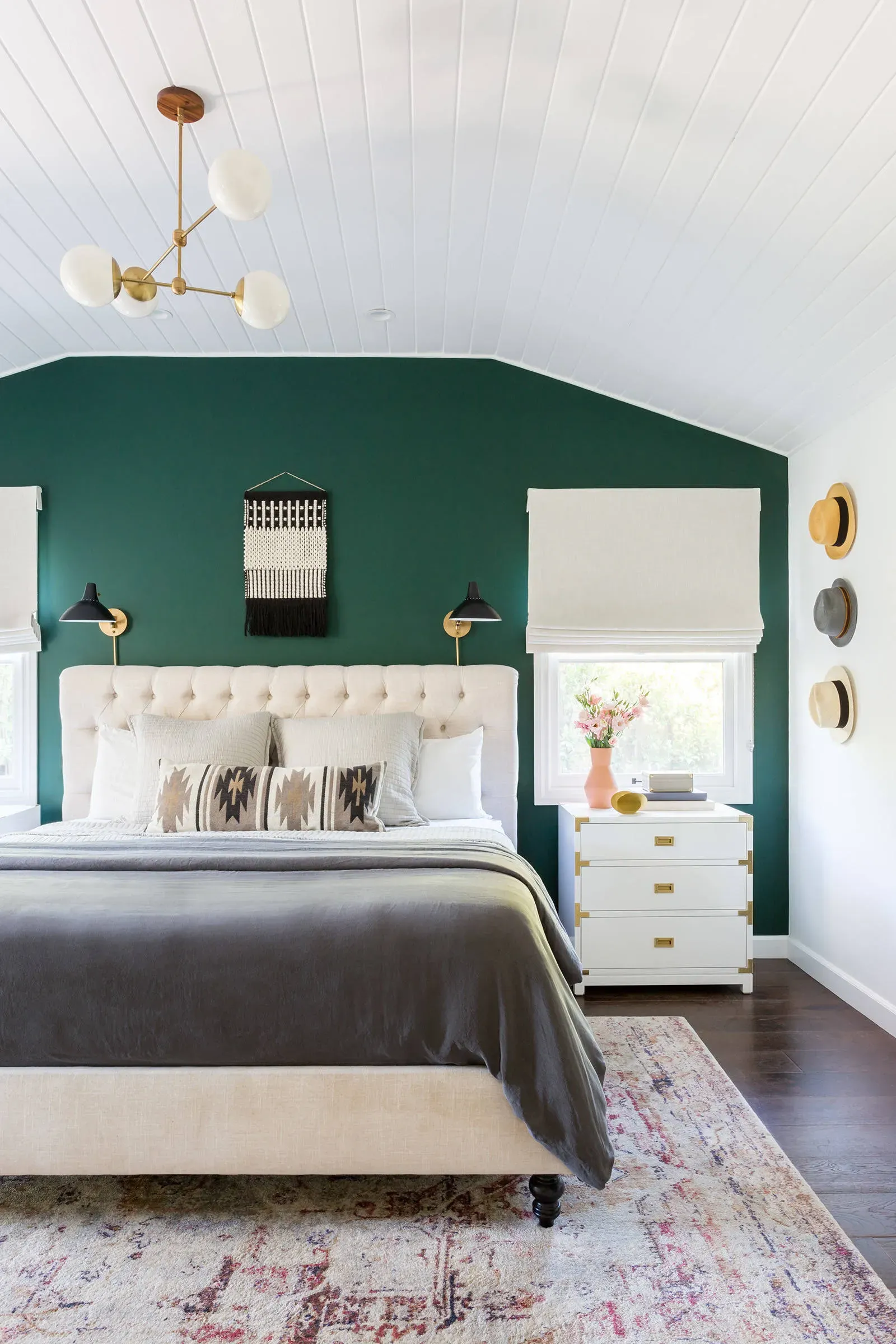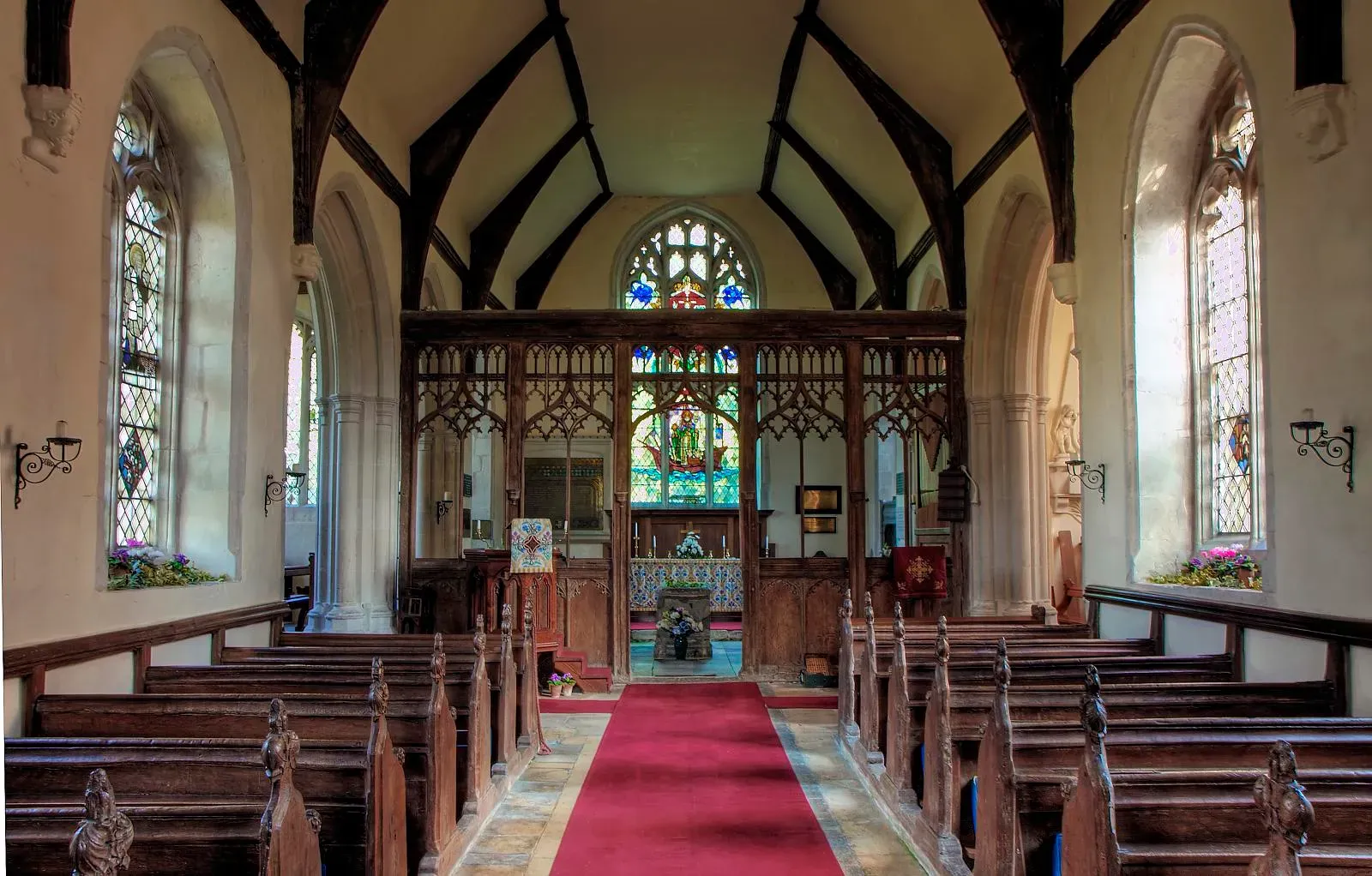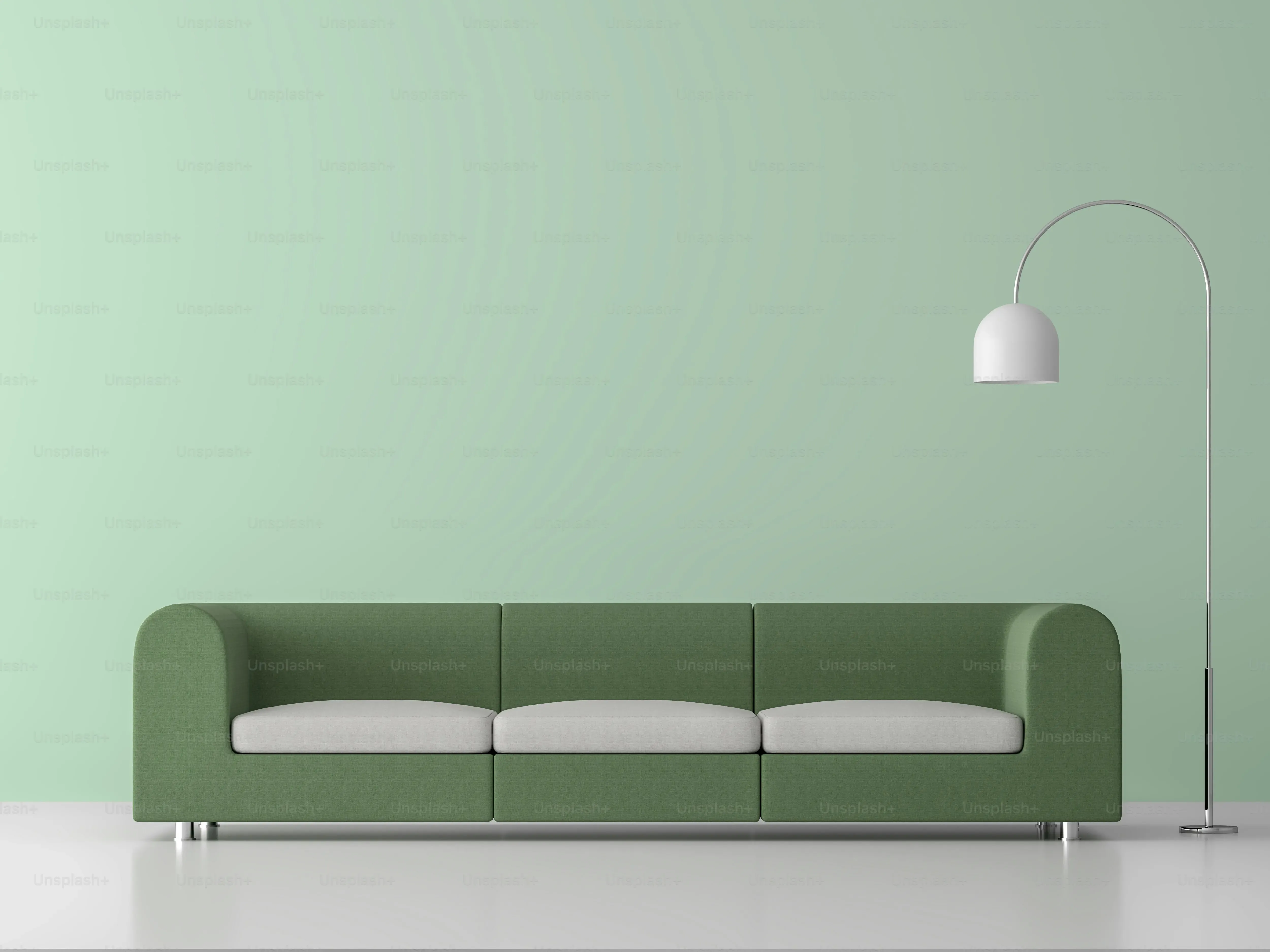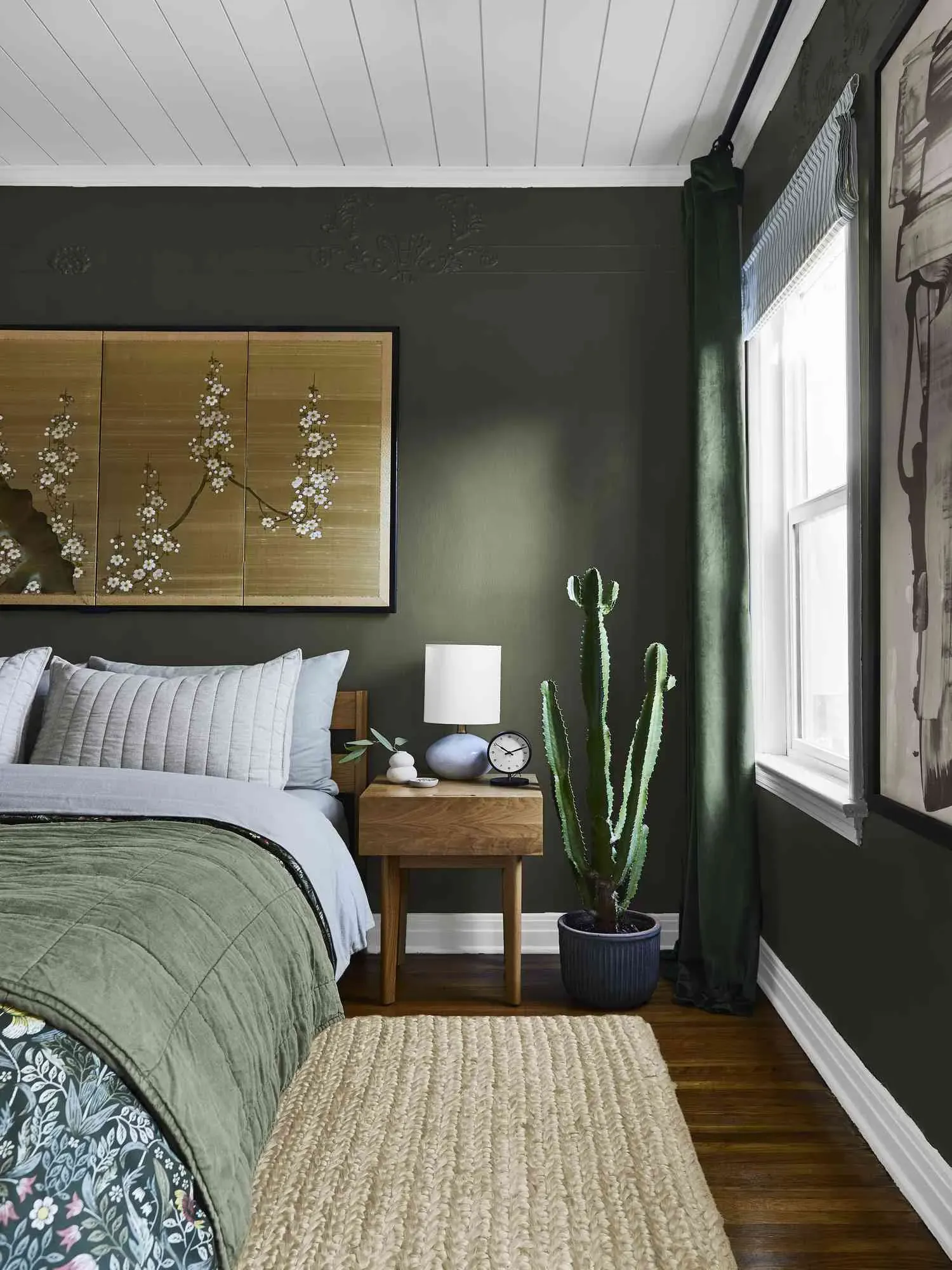Table of Contents
Staring at that blank wall again? Maybe it feels a bit… beige. Or perhaps you're just tired of everything blending together. Picking a paint color can feel like a commitment, a big splash that’s hard to undo. It’s easy to get stuck in neutral territory, playing it safe when you really crave something with a bit more life.
Why Go Green? The Appeal of a Green Accent Wall

Why Go Green? The Appeal of a Green Accent Wall
Breaking Up the Monotony
Look, we've all been there. You paint everything a nice, safe neutral. It's clean, it's calm, it's… kind of boring after a while. An accent wall is your chance to break free without committing to a full-room color blast that might make you feel like you're living inside a crayon box.
It draws the eye, creates a focal point, and adds a layer of visual interest that plain walls just can't manage. Think of it as giving one wall a personality transplant while the others keep their quiet dignity. It’s a calculated risk that usually pays off big time, especially when you pick a color with some oomph.
The Psychology of Green
Now, why green? This isn't just some random pick. Green is hardwired into us as a color of nature, growth, and tranquility. It's the color of forests, fields, and that perfectly manicured lawn you maybe, just maybe, aspire to have.
Bringing green indoors can make a space feel more grounded, more relaxing. It’s why waiting rooms often use it – it’s supposed to soothe the savage beast of impatience. Using it on an accent wall delivers that calming effect without turning your whole room into a jungle, unless that's explicitly the vibe you're going for, in which case, carry on.
- Green connects spaces to the natural world.
- It promotes feelings of calm and relaxation.
- Different shades offer different moods (bold emerald vs. soft sage).
- An accent wall provides color impact without commitment.
- It creates a strong focal point in a room.
Picking Your Perfect Hue: Shades for Your Green Accent Wall Ideas

Picking Your Perfect Hue: Shades for Your Green Accent Wall Ideas
Considering the Room's Vibe
Alright, so you're sold on green. Great choice. Now for the slightly tricky part: which green? It's not just "green," is it? There are a million shades out there, and the one you pick totally dictates the mood of your space. Think about the natural light in the room. Does it get bright afternoon sun, or is it a bit moodier? Light affects how paint looks, big time. A bright lime might feel electric in a sunny room but just sickly in a dim one. Conversely, a deep forest green can feel sophisticated and cozy with less light.
Also, consider what you already have in the room. Your furniture, your art, your rugs – they all play a role. A cool-toned sage green might clash horribly with warm, oak furniture, or it might create a stunning contrast. You need to hold up those paint chips and see how they interact with the real-world elements you're keeping. Don't skip this step unless you enjoy repainting.
From Sage to Emerald and Beyond
Let's talk specifics. Soft sage greens are like a gentle hug for your walls. They're calming, versatile, and work well in bedrooms or living areas where relaxation is key. They pair beautifully with natural wood tones and soft whites. If you want something more dramatic, look at forest or emerald green. These are bold, sophisticated choices that scream 'design.' They can make a statement in a dining room or add depth to an office. Emerald works particularly well with metallic accents like gold or brass.
Then you have the brighter, more saturated greens – think apple or lime. These are energetic and fun, perfect for a playroom or a creative space. They demand attention. Olive green offers a more muted, earthy feel, fantastic for creating a vintage or bohemian vibe. Each shade brings its own personality to yourgreen accent wall ideas.
- Sage Green: Calming, versatile, pairs with wood and white.
- Forest/Emerald Green: Bold, sophisticated, works with metallics.
- Apple/Lime Green: Energetic, fun, great for creative spaces.
- Olive Green: Earthy, muted, good for vintage/bohemian styles.
- Mint Green: Fresh, light, ideal for smaller spaces or a retro feel.
Testing, Testing, 1, 2, 3
Seriously, get samples. Those little paint chips are helpful for narrowing it down, but paint looks completely different on a large wall, with your room's specific lighting, than it does on a tiny square at the store. Paint a decent-sized swatch (at least 1 foot by 1 foot) on the wall you plan to accent. Paint it in a couple of different spots if your lighting varies.
Watch how the color changes throughout the day as the light shifts. Does it look too dark in the evening? Too bright in the afternoon? Does it pick up weird undertones you didn't notice before? This step prevents expensive mistakes and ensures the green you fall in love with at the store is the same green that makes you happy on your wall.
Room by Room: Where to Use Green Accent Wall Ideas

Room by Room: Where to Use Green Accent Wall Ideas
Living Room Focal Point
the living room. This is often the first place people think about adding an accent wall. It’s usually the biggest room, the one guests see, and where you probably spend a decent chunk of time. Agreen accent wall ideashere can anchor the space, providing a backdrop for your sofa, a gallery wall, or a fireplace. Picture a deep forest green behind a light-colored sectional – instant drama, instant sophistication. Or maybe a softer sage behind a collection of framed art, making the colors pop.
Picking the wall opposite the entrance or the longest wall works well to draw the eye in. Avoid walls with too many windows or doors; the color loses its impact when constantly interrupted. The goal is a solid block of color that makes a statement, not a patchy mess around architectural features.
Bedroom Retreat
Your bedroom should be your sanctuary, right? A place to unwind, escape the daily grind. Green is a natural fit for this vibe, and a green accent wall can seriously up the tranquility factor. Think calming, muted shades like sage, moss, or even a dusty olive behind your headboard. These colors are restful and promote relaxation, which is kind of the point of a bedroom.
Placing the accent wall behind your bed is the classic move. It frames the most important piece of furniture in the room and gives you something lovely to look at (or not look at, ideally, while you're sleeping). It keeps the rest of the room feeling light and airy if you stick to neutrals on the other walls.
- Living Room: Use a bold green behind the sofa or fireplace for drama.
- Bedroom: Opt for calming greens behind the bed for a restful feel.
- Dining Room: A rich green can make the space feel intimate and elegant.
- Home Office: Brighter greens might boost creativity, while softer ones aid focus.
- Entryway: A small pop of green can make a welcoming first impression.
Beyond the Usual Suspects: Kitchens, Dining, and More
Don't limit yourgreen accent wall ideasto just living rooms and bedrooms. A dining room, for instance, is a fantastic place for a more dramatic green. A deep emerald or a rich hunter green can make the space feel more intimate and elegant, perfect for dinner parties. It provides a sophisticated backdrop for your dining table and chairs.
Even kitchens can handle a touch of green, perhaps on a single wall not dominated by cabinets, or a pantry door. A vibrant apple green might add energy to a breakfast nook. Or consider a home office; certain greens are said to aid concentration and creativity. It’s about finding the right spot and the right shade to complement the room's function and existing elements.
Beyond Paint: Creative Green Accent Wall Ideas

Beyond Paint: Creative Green Accent Wall Ideas
Texture and Dimension
So, you've decided on green, and maybe you've even picked a shade. But hold on – an accent wall doesn't *have* to be just a flat coat of paint. You can add texture and dimension to yourgreen accent wall ideasto make it even more interesting. Think about peel-and-stick wallpaper with a cool green pattern, or maybe even textured wall panels painted green. Wood slats, vertical gardens (if you're feeling ambitious and have a green thumb that actually works), or even fabric panels can bring a whole new level to the wall. It’s about making the wall a tactile experience, not just a visual one.
Making It Work: Decorating Around Your Green Accent Wall
Making It Work: Decorating Around Your Green Accent Wall
you've got your killer green wall. Now what? The rest of the room can't just sit there looking awkward. Yourgreen accent wall ideasneed friends. Think about how other colors and textures will play with this bold statement. Neutrals are your best bet for the other walls and larger furniture pieces – think crisp whites, warm beiges, or even a soft gray. These colors let the green wall be the star without competing. Then, layer in complementary colors through accessories. Pinks, corals, or deep reds can create a vibrant contrast with green. Blues and yellows can offer a more harmonious, natural palette. Don't forget textures – wood, metal, textiles like velvet or linen – they add depth and keep the space from feeling flat, even with a strong color on one wall.
- Use neutrals (white, beige, gray) on other walls and large furniture.
- Introduce complementary colors (pink, coral, red) through accessories.
- Incorporate harmonious colors (blue, yellow) for a natural feel.
- Layer textures (wood, metal, velvet, linen) to add depth.
- Ensure lighting highlights the accent wall effectively.
Bringing Your Green Vision to Life
You've walked through the possibilities, eyed the shades from deep forest to whispers of sage, and considered which wall might actually work. Committing to a single wall of color isn't a small decision, but it's also not brain surgery. A well-chosen green accent wall can ground a room, provide a much-needed focal point, or simply add a layer of visual interest that was missing. It demands some thought about furniture placement and complementary colors, naturally. But when executed with intention, that one wall can transform a space from forgettable to striking, proving that sometimes, less truly is more impactful.
